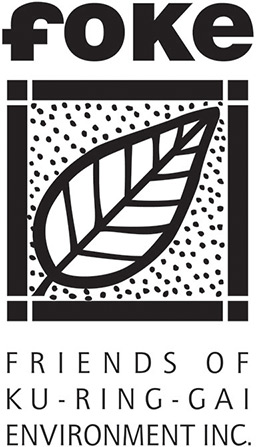
Canadian photographer Patricia Homonylo has won the 2024 Bird Photographer of the Year award – Conservation category – with her thought-provoking image titled ‘When Worlds Collide‘.
The photograph shows more than 4,000 birds that died colliding with windows and other reflective surfaces in Toronto, Canada.
“Each year more than one billion birds die in North America alone due to collisions with windows,” says Homonylo.
“I am a conservation photojournalist and have been working with the Fatal Light Awareness Program, where we save window-collision survivors in Toronto.
“Sadly, most of the birds we find are already dead.
“They are collected and at the end of the year we create this impactful display to honour the lives lost and increase public awareness.”
Ku-ring-gai Council’s Independent Assessment into the potential ecological impacts associated with the NSW Government Planning reform: the TOD SEPP and the Low-Mid rise Housing Policy states “There is the potential that the developments associated with the SEPP and Housing policy will interfere with flight paths of some protected animals, including migratory species”.
The picture was taken in Toronto and beat more than 23,000 entries to claim the prize.
The picture features a wild turkey at its centre, surrounded by concentric circles of smaller and smaller birds, including hawks, owls, warblers, blue jays and more.
Their bodies were collected and arranged by members of the Fatal Light Awareness Program (FLAP), a Canadian charity which helps birds injured in these kinds of collisions.
“Unfortunately, most of the birds they find are dead. [But] those bodies are never left behind,” Homonylo said.
“Once a year, the volunteers get together and they create this beautiful and tragic image of the birds called The Layout. And that’s what you’re looking at.”
Environment Canada estimates as many as 42 million birds die from collisions with windows every year in Canada. Already this year, FLAP has recorded 331,718 fatal bird collisions in North America.
And a study published last month in the journal Plos One found that window collisions are even deadlier for birds than previously believed, and that only 40 per cent of birds injured this way in the northeastern United States survived. Canadian conservationists are calling on companies to reduce the reflectivity of the glass surface on all new large buildings.
Ku-ring-gai Council’s Independent Assessment into the potential ecological impacts associated with the NSW Government Planning reform: the TOD SEPP and the Low-Mid rise Housing Policy raises numerous concerns about the future of bird survival including:
- The proposed planning control would reduce requirements for deep soil planting and tree targets from 50% to 7% of site area for mid-rise housing. This will result in net loss of trees, and revegetation (native vegetation replacement) over the whole of Ku-ring-gai. This means there is dramatically less habitat and food for birdlife.
- If the SEPP and Housing Policy do not make amendments than its Critically Endangered Ecological Communities of Blue Gum High Forest and Sydney Turpentine Ironbark Forest “will be lost forever”. The hollows that are the homes of a diverse variety of birds will also be lost forever.
- The nomadic, vulnerable, Yellow-bellied Sheath-tailed Bat (Saccolaimus flaviventris) relies on tall trees on ridgelines, particularly those that contain hollows, or decorticating bark, including remnant Sydney Blue Gum (Eucalyptus saligna) and Sydney Red Gum (Angophora costata) to shelter as it migrates north and south.
- The loss of tree canopy cover and vegetation as a whole will also support, an environment that is more suited to urban-adapted and non-native birds such as Common Myna (Acridotheres tristis), Feral Pigeon (Columba livia domestica) and the overabundant Australian Raven (Corvus coronoides).
- the Powerful Owl (Ninox strenua) and Grey-headed Flying-fox. Both species are listed as vulnerable under NSW legislation, and the Grey-headed Flying-fox is also listed as vulnerable under the Commonwealth EPBC Act. These species rely heavily on the tree canopy across the Ku-ring-gai LGA
- Breeding habitat for birds is at risk due to the SEPP and Housing Policy due to the tree felling of hollow-bearing trees.
- Multiple beautiful, iconic, native birds that characterise the Ku-ring-gai area rely on tree hollows, such as those within the proposal area, for breeding and shelter. This includes the Crimson Rosella and Australian King Parrot, as well as the Laughing Kookaburra (Dacelo novaeguinea), Rainbow Lorikeet (Trichoglossus haematodus), Musk Lorikeet (Glossopsitta concinna), Eastern Rosella (Platycercus eximius), Sulphur-crested Cockatoo (Cacatua galerita), Galah (Eolophus roseicapilla), Long-billed Corella (Cacatua tenuirostris), Little Corella (Cacatua sanguinea), Sacred Kingfisher, Dollarbird and Australian Boobook Owl (Ninox boobook).
- The vulnerable Powerful Owl are known to be living in Gordon, Killara, Lindfield, Roseville and Turramurra. The proposed planning changes could result in permanent loss of their breeding habitats.
- Read the full potential ecological impacts below:
References:
https://www.cbc.ca/radio/asithappens/bird-photographer-of-the-year-2024-1.7332480
As birds fly south, windows are getting in the way
What on Earth? Why birds migrate through cities — and how you can help them succeed
https://www.birdpoty.com/2024-winners
26 September 2024

Stay in Touch
Sign up for FOKE E-News HERE
info@foke.org.au
https://www.facebook.com/friendsofkuringgai/
